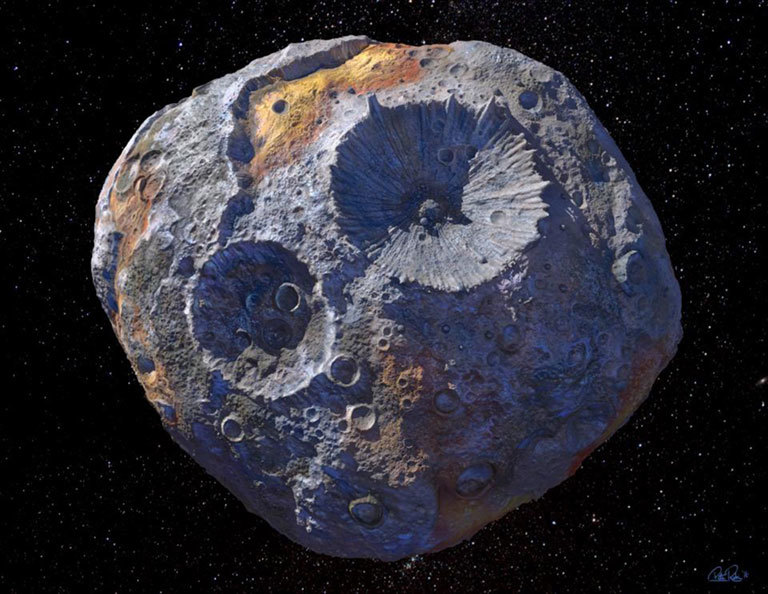
16 Psyche (image credit: Maxar/ASU/P.Rubin/NASA/JPL-Caltech/USA Today)
Mars is covered in rust, iron oxide, which gives it its characteristic red hue. This iron, along with silicon-bearing minerals, can be used for building materials, and abundant water trapped in minerals on the surface can be extracted and converted to molecular oxygen and hydrogen, both for breathing and for rocket propellant (Scheller, et al, 2021). There are numerous valuable resources on the planet that can be used, not only to sustain a colony on Mars, but to allow for a return to Earth using planetary materials. This will save an enormous amount of weight for an exploratory mission, as most of a rocket's cargo is fuel. If fuel can be produced onsite, that frees up room for more survival and/or research equipment.
As our own planet heats up, greener energy sources are being developed, which require rare earth elements. As demand for these resources go up, supply cannot keep up, and other sources for the minerals that contain these elements are being sought. The asteroid belt past Mars is a treasure trove of these precious resources. 16 Psyche, for example, is an M-type asteroid, believed to be composed of nickel and iron compounds. It is roughly 226 km in diameter. The distinguishing feature of this asteroid is that is worth an estimated $10,000,000,000,000,000 in iron and nickel, well over the GDP of the entire planet (Rice, 2020)! And this is just one of millions of space rocks waiting to be mined.
The technology to get us to Mars will be refined to propel us even farther out, to Jupiter, which has a moon covered in water ice, with a possible subsurface ocean. Or to Uranus, or Neptune, which are abundant in a heavy hydrogen isotope that can be used in fusion reactors for energy production or rocket engines.